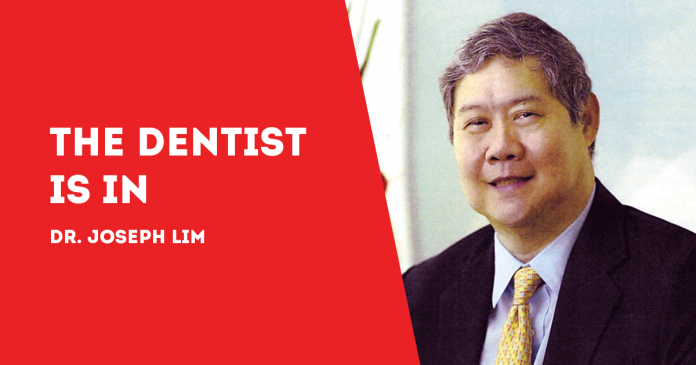
(By Dr. Joseph D. Lim and Dr. Kenneth Lester Lim, BS-MMG, DDM, MSc-OI)
THE APPENDIX, male nipples and wisdom teeth are just some parts of the body that are there because they have always been there, an integral part of human evolution.
They don’t have apparent functions, or so it seems.
And it may not be the case. Take the thymus gland, long considered that we have little use for after childhood.
So much so that the thymus is removed in a routine surgical procedure called a thymectomy. Now, researchers at the Massachusetts General Hospital found that it should not be the case as the thymus is very much an important organ.
And so it is. According to their study, published in the New England Journal of Medicine, there is a risk of death for any reason five years after surgery among those with thymectomy (8.1 percent) compared to those of did not have their thymus removed (2.8 percent).
Over the same time period, the risk of cancer was about 7.4 percent for thymectomy patients but just 3.7 percent for those who did not have the procedure. The research concludes that the thymus is required for health after all. Without it, the risk of dying and the risk of cancer is at least double. Their advice: think twice before having a thymectomy.
Now with wisdom teeth, another body part that seems to have no obvious function beyond early adulthood. It is believed that wisdom teeth evolved from the distant past when humans had large jaws and more teeth. That’s not the case today when jaws are small for the extra wisdom teeth.
Four wisdom teeth are found at the very back of the mouth: two in the upper jaw and two in the lower jaw.
They develop fully at age 18 to 24. That’s the time when wisdom teeth appear – if at all. At least one wisdom tooth stays inside the jaw of about 80 out of 100 young adults.
Although they don’t cause any problems, they are often considered an inconvenience because there is not enough space. As a result, swelling and inflammation may occur causing pain, especially when wisdom teeth don’t appear.
When wisdom teeth do appear, they can be crooked and cause pain and inflammations.
Sometimes wisdom teeth impact on or damage the adjacent teeth and increases the risk of tooth decay. Then they are removed.
According to the US National Center for Biotechnology Information, it’s best to talk to your dentist about wisdom teeth if there are oral health issues.
After the mouth and jaw are examined, an x-ray may be taken to determine the position of the wisdom teeth and find out if they will cause problems or will come in normally.
One or two wisdom teeth may be extracted if they cause pain and/or other issues. This is a simple procedure using a local anesthetic.
Only if wisdom teeth cause problems. And not before. Ask your dentist. She or he knows best.
***
Dr. Joseph D. Lim, Ed. D., is the former Associate Dean of the College of Dentistry, University of the East; former Dean, College of Dentistry, National University; Past President and Honorary Fellow of the Asian Oral Implant Academy; Honorary Fellow of the Japan College of Oral Implantologists; Honorary Life Member of the Thai Association of Dental Implantology; and Founding Chairman of the Philippine College of Oral Implantologists. For questions on dental health, e-mail jdlim2008@gmail.com or text 0917-8591515.
***
Dr. Kenneth Lester Lim, BS-MMG, DDM, MSc-OI, graduated Doctor of Dental Medicine, University of the Philippines, College of Dentistry, Manila, 2011; Bachelor of Science in Marketing Management, De la Salle University, Manila, 2002; and Master of Science (MSc.) in Oral Implantology, Goethe University, Frankfurt, Germany, 2019. He is an Associate Professor; Fellow, International Congress of Oral Implantologists; and Fellow, Philippine College of Oral Implantologists. For questions on dental health, e-mail./PN







